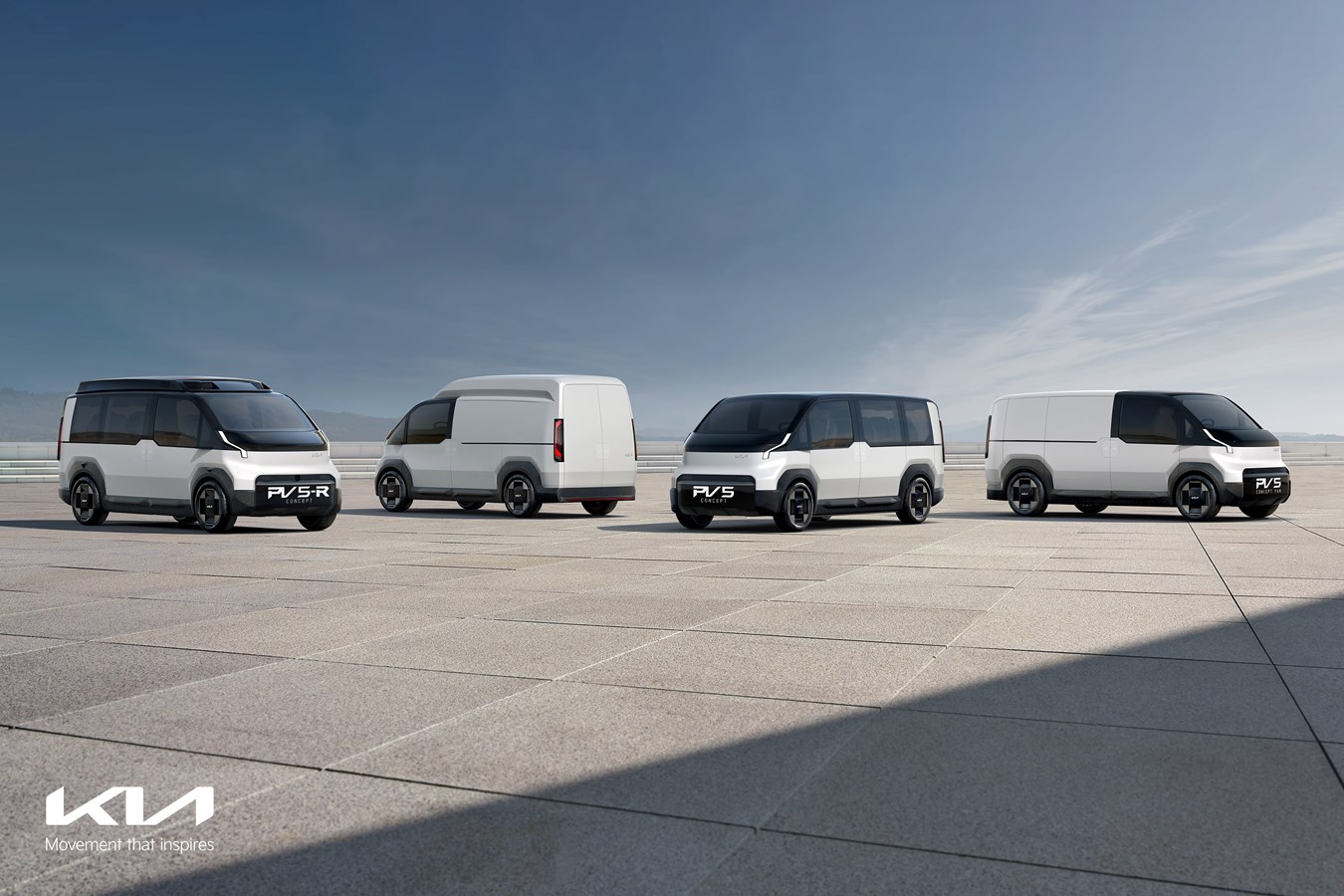
The first full day of the annual tech blowout know as CES 2024 – formerly the Consumer Electronics Show – wrapped up Monday in Las Vegas with a bit of news from various carmakers.
A lot of it didn’t have much to do with passenger vehicles, but VW did say it is putting a chat bot in many of its EVs; and BMW talked up in-car gaming and artificial intelligence. In addition:
- Hyundai renewed and expanded on its commitment to hydrogen as a transportation fuel of the future;
- Kia showed off a vehicle-to-home power sharing concept as well as design concept models of two new EVs and a flexible platform concept with interchangeable bodies for commercial vehicles.
AI for VW
Volkswagen says it will be the first mainstream automaker to integrate the Chat GPT artificial intelligence chat bot into its cars, starting with models such as the all-electric ID series (we get the ID.4 SUV and ID.7 sedan in the U.S.) and the gas-burning Tiguan SUV, Passat sedan and Golf and GTI hatchbacks.
The system will become a standard feature in “many” of VW’s production vehicles starting in the second quarter and will be integrated into the IDA voice assistant. However, it is not clear whether and how soon models destined for the U.S. will get the same stuff.
The ability of the chat bot to answer general knowledge questions is being “considered” for the U.S., the automaker said.
Until then, it will continue activating various vehicle-related functions (“turn on the AC”) and provide weather, stock market and s[orts reports.
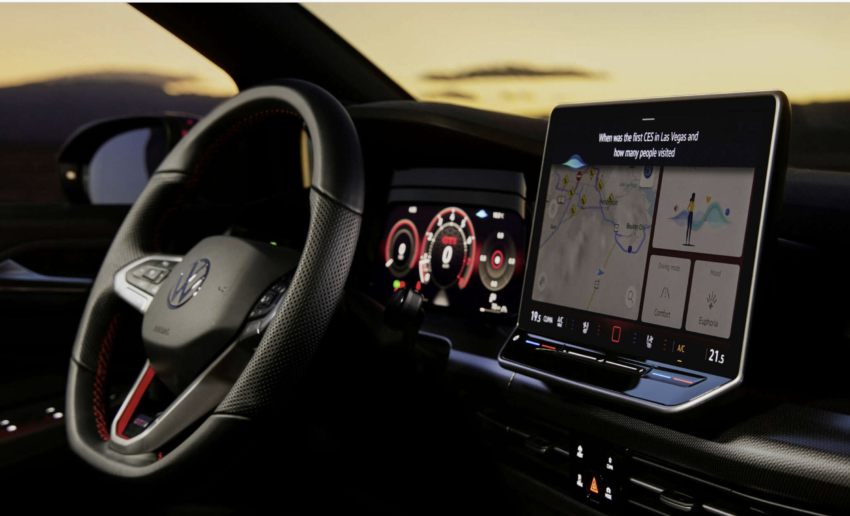
VW said integrating ChatGPT will rapidly expand the vocabulary of the voice-activated IDA system.
So someday you’ll be able to ask the assistant to research a topic and read its findings to you while you are driving. Or you might want to ask it to solve your kids’ math homework problems while ferrying them to school in the morning – or to resolve an argument you are having with your passenger over who won the World Singles Tiddlywinks Championship in 2015 (spoiler – it was Larry Kahn of the North American Tiddlywinks Federation).
Hyundai on Hydrogen…
H2 is on Hyundai’s mind and the South Korean conglomerate say it believes hydrogen solutions “go beyond” cars, trucks and buses to include just about anything else that moves people or goods.
The company says it is expanding its HTWO brand from a mere fuel cell systems business to become the overarching Hyundai Motor Group hydrogen business brand. Hyundai intends not only to build hydrogen-fueled vehicles but to produce the hydrogen that fuels them and the hydrogen stations they’ll need for filling their fuel tanks.
Hyundai also said it intends by 2035 to be taking about 3 million metric tons of hydrogen per year (6.6 billion pounds or 3 billion kilograms) from its annual production to use for powering businesses such as green steel production, electrical power generation and clean logistics.
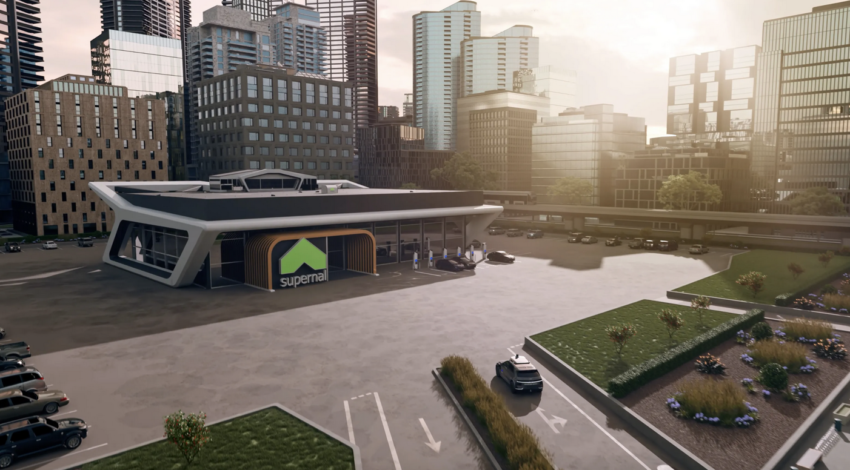
…Flying, Too
Hyundai’s Supernal unit is using CES 2024 to showcase an all-electric vertical takeoff and landing –VTOL – aircraft and a concept vertical airport (a “vertiport” ) from which to launch it.
Hey, transportation was never just about cars.
BMW Talks Tech
Perhaps unable to conceive of an even bigger grille, BMW eschewed showing a new design concept at this year’s CES and instead talked about all the improvements and upgrades in in-car tech it will be bringing to market.
In addition to more stuff powered and/or augmented by artificial intelligence, the company said customers with vehicles running the company’s Google Android-based iDrive9 operating system will be able to purchase (!) a BMW Digital Premium package to access a pile of third-party apps that will let them use their car’s or SUV’s infotainment screen for gaming while they are safely parked, including, for EV drivers, whiling away the time while charging at an EV charging station – or while waiting for the car ahead of you to finish charging so you can start.
Kia’s Things to Come
Kia – a member of Hyundai motor Group – showcased its Kia Connected Home display – a mockup of a residence intimately linked to the EVs that its occupants drive.
The new EV9 three-row electric SUV from Kia is parked out front and uses a bi-directional, 11.5 kW home charger to fill its battery. It can then send power from the battery to the home in times of need – power outages, for instance. The EV 9’s battery packs range from 76 to 99.8 kWh, holding way more juice than the standard home (solar) energy system’s storage battery capacity of 13.5 kWh, the bidirectional charger can automatically switch from charging the vehicle to drawing power from the vehicle for the home and then back to vehicle charging when the power outage ends.
Kia additionally showed its PBV or “Platform Beyond Vehicles” concept. The base is an EV platform that contains all the necessary power and operating components and can be fitted with a variety of modular vehicle bodies. It could be a taxi during the day, a delivery van at night and the owner’s personal camper on weekends, for instance. Kia showed three platform – or chassis – sizes, to accommodate various types of bodies.
Also on tap from Kia were two design concepts it has shown previously – the Concept EV3 compact crossover and the Concept EV4 electric sedan.
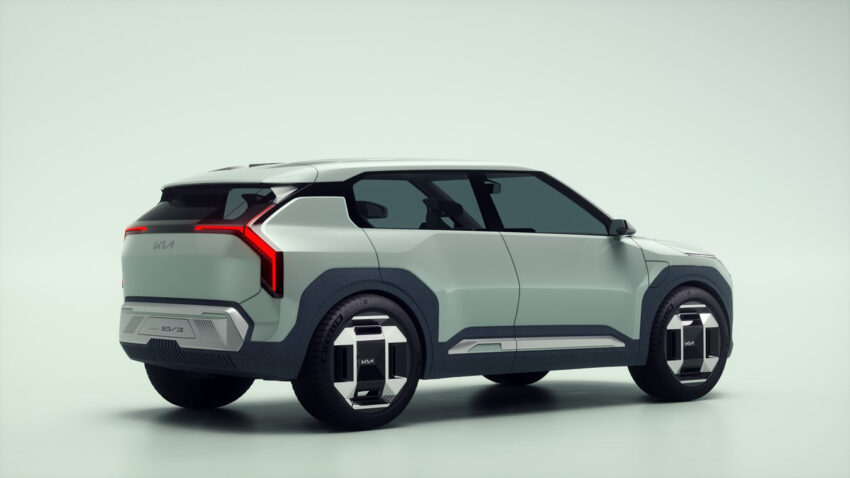
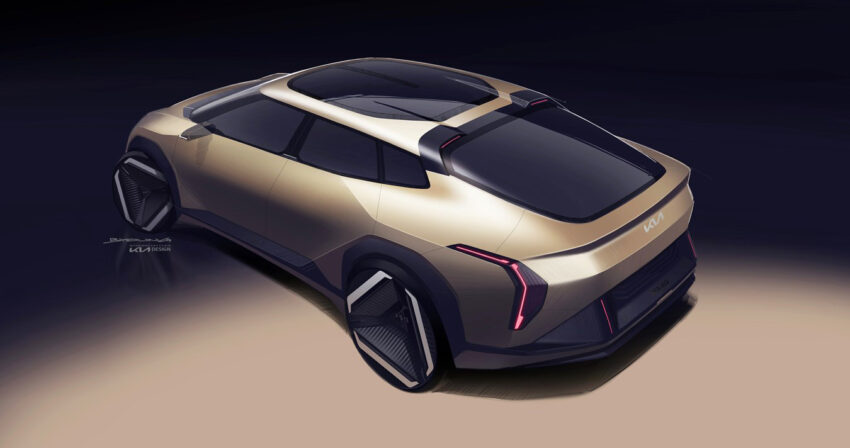
CES 2024 runs through Friday and we’ll being you periodic, automotive-related updates.
